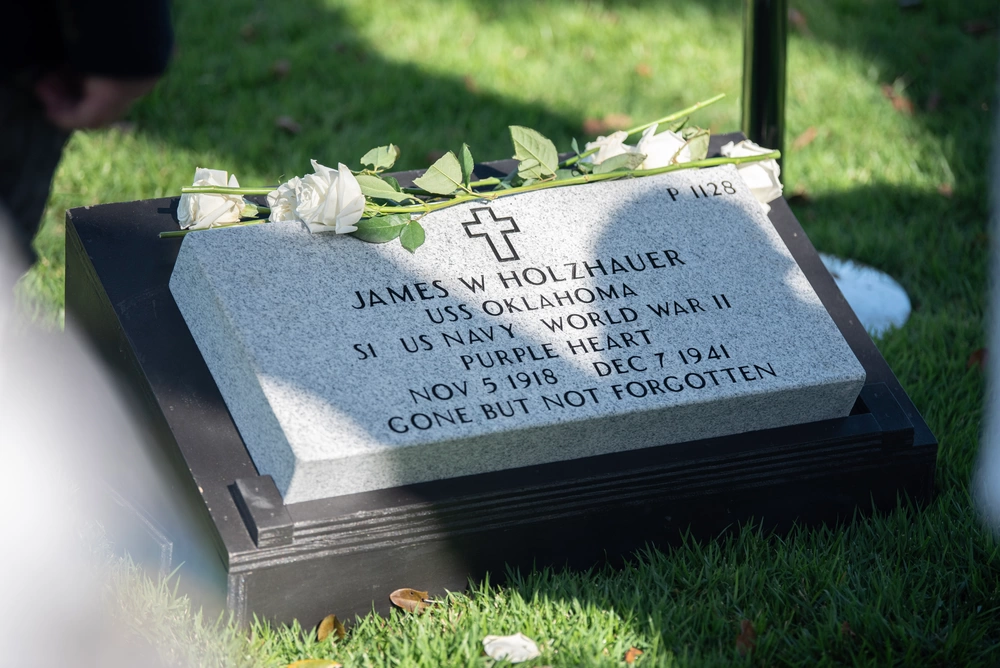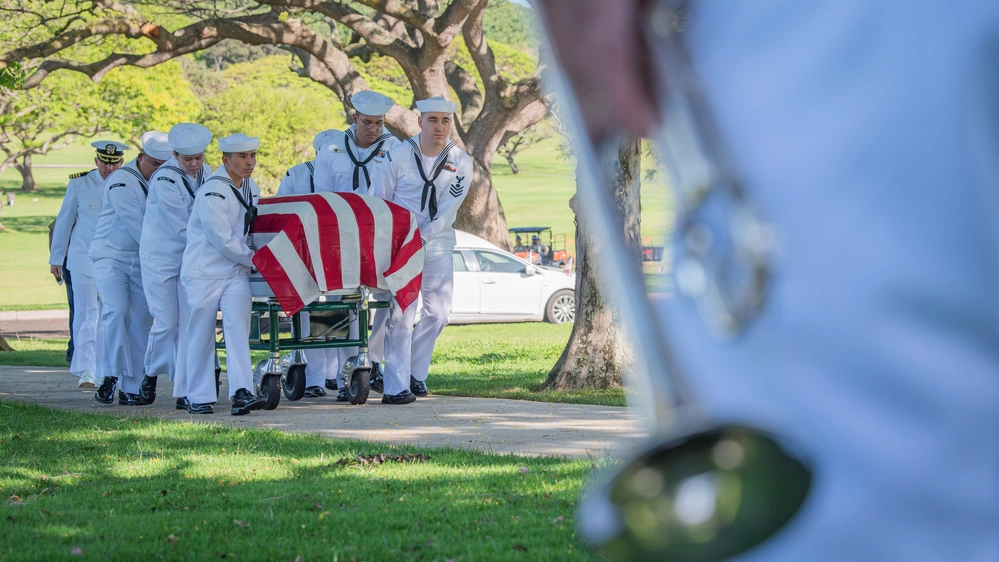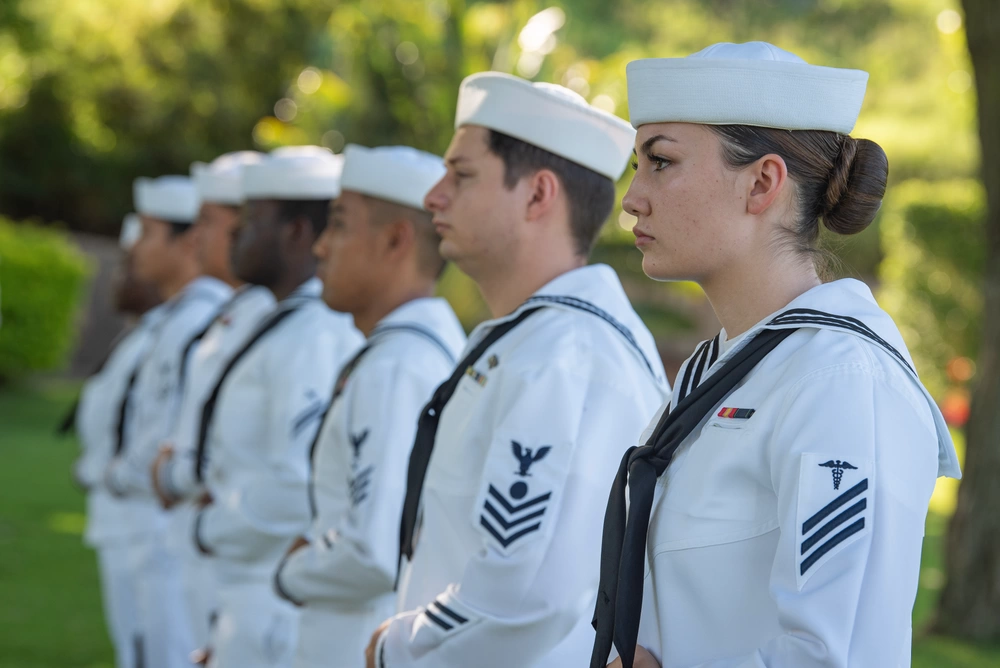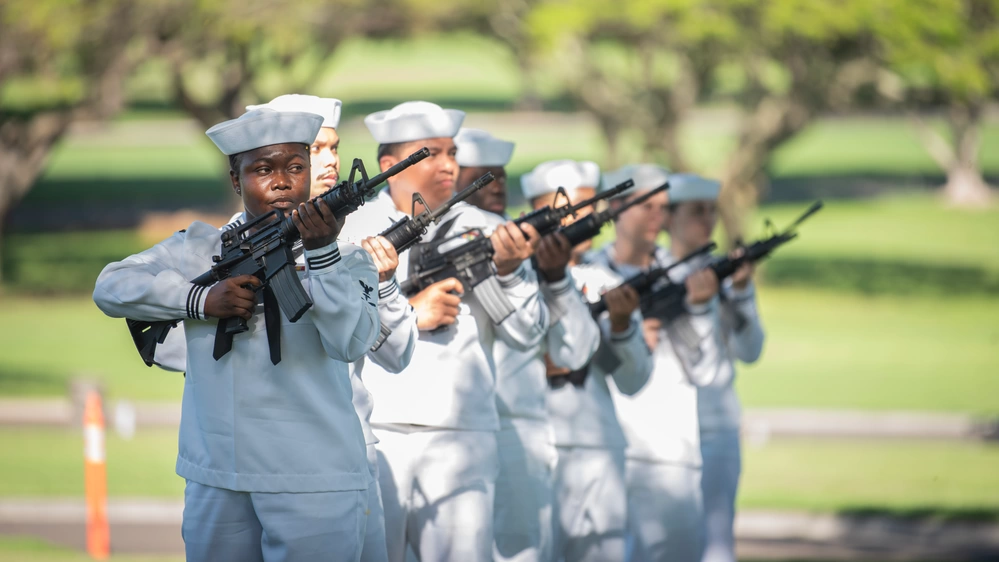A World War II veteran from Abingdon whose remains were unidentified for decades was buried this week at the National Memorial Cemetery of the Pacific, six years after his remains were accounted for by the U.S. government.
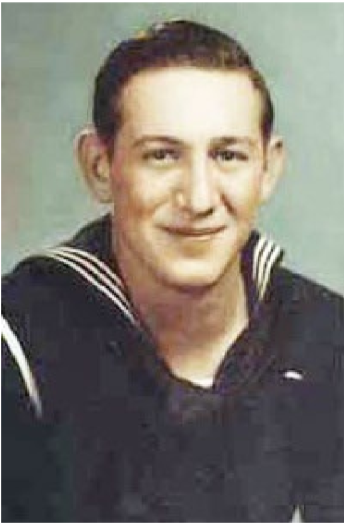
James Holzhauer, who was born Nov. 5, 1913, in Abingdon, died from the attack on Pearl Harbor on Dec. 7, 1941. The seaman first class, who was posthumously awarded five military decorations, including the Purple Heart medal, served aboard the USS Oklahoma. He was one of the ship’s 388 missing sailors after the attack, said Capt. Jeff Draude, director of the Navy Casualty Office.
Holzhauer enlisted in the Navy in 1937 as a seaman apprentice and served at the naval base in Norfolk until he became a seaman second class and transferred to the USS Oklahoma on March 9, 1938. He was promoted to seaman first class in October 1939.
In his three years aboard the USS Oklahoma, Holzhauer likely performed basic ship maintenance, Draude said. This would include painting, cleaning, polishing and repair work. He also would have helped with cargo movement, stood watch and acted as a messenger.
Holzhauer’s remains were identified as part of Project Oklahoma, a joint mission by the U.S. Navy and the Defense POW/MIA Accounting Agency, or DPAA, to bring the sailors home to their families. Originating in 2015, the project set out to identify all 388 sailors and has successfully done so for 356. Thirty-two remain missing.
“The heart of the warrior ethos is never leave a fallen comrade,” said Sean Everette, the DPAA media relations chief. “That’s something that when those service members raised their right hand and swore to protect and defend the United States and the Constitution, the country also made a promise to them that they would never be left behind and they will never be forgotten.”
The USS Oklahoma sank when Japan attacked American ships at Pearl Harbor, accounting for 429 of the 2,402 U.S. deaths that day. As a result, just days after the attack on Pearl Harbor, the U.S. would declare its official entrance to World War II. On Ford Island in Hawaii stands a memorial to the USS Oklahoma and the sailors who died that day.
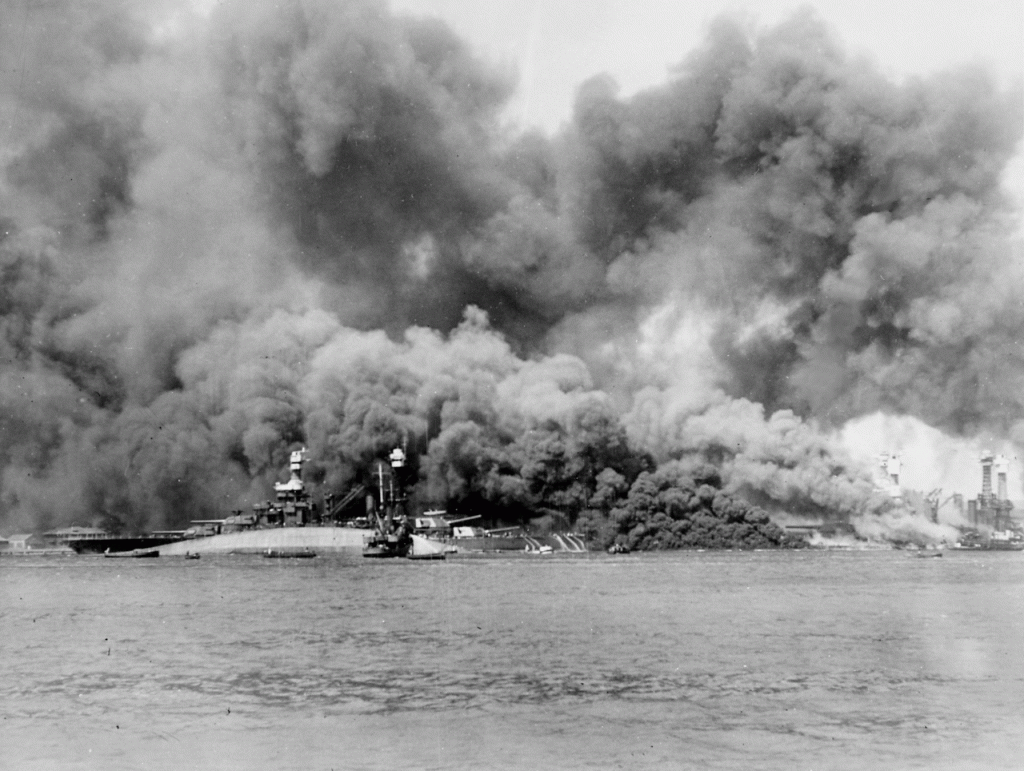
In addition to the Purple Heart medal, Holzhauer was awarded a Combat Action Ribbon, an American Defense Service Medal, an Asiatic-Pacific Campaign Medal and a WWII Victory Medal.
Holzhauer’s remains were identified in 2018, but myriad obstacles delayed the burial for nearly six years. Everette said that he’s not sure what happened in Holzhauer’s case, but that it can take a while to find and contact family members for burial plans. Often, he said, the primary next of kin are too old to handle funeral arrangements or die during the planning process. The government then has to find the next-closest survivors, if possible.
The pandemic also threw a wrench into funeral plans, Everette said. Some burials that had been set for 2020 are just now being rescheduled.
“It is entirely possible that Holzhauer originally had a funeral scheduled for another year at some point after early 2020,” Everette said. “Then, because of COVID, a lot of funerals got postponed until a later date, and some of those funerals are only just now coming around.”
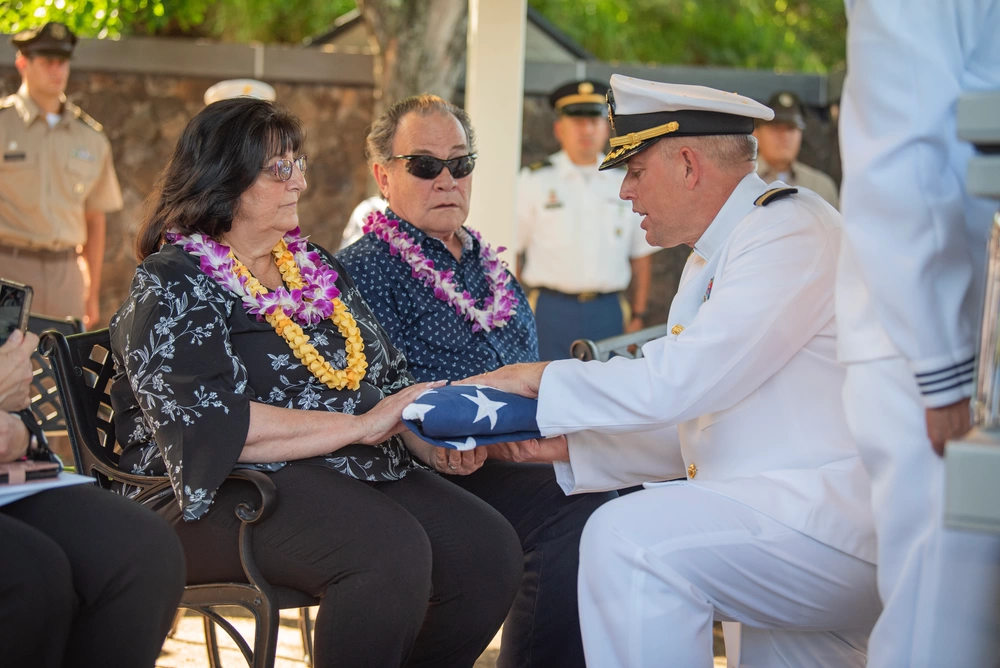
The identification process, run by DPAA historians, anthropologists and scientists, can take months to years, Everette said. It involves scouring records and retrieving what Draude called “reference samples” from potential surviving family members, whose DNA is then compared with the sailors’ remains.
When the Navy disinterred the sailors’ remains from the National Memorial Cemetery in 2015 to start Project Oklahoma, Everette said, the experts had to figure out which remains belonged together.
“It was like a giant puzzle … putting together as best they could full sets of remains,” Everette said.
If the DNA is a match, officers notify the next of kin, usually in person. Then they help carry out the family’s wishes for funeral arrangements. Families can choose to cremate the remains and keep them, or they can select a burial at a private or U.S. cemetery, including the National Memorial Cemetery of the Pacific in Honolulu, where Holzhauer and other unidentified service members had previously been buried.
The Navy also covers all the primary costs for families, including the preparation and transportation of remains, a casket, family travel and lodging. If families opt for it, it also provides burial rights such as a rifle salute, burial team and taps, the bugle call for “lights out” that is also played at military funerals.
“We are there to support that and help coordinate and facilitate that to happen to ultimately give the family and the service member the respect that they’ve earned, paying the ultimate sacrifice for their country,” Draude said.
Holzhauer’s family has declined to speak with journalists, but Draude said many families reunited with loved ones experience closure, even if they never knew the service member.
At this point, that’s often the case, Draude said. But many have told the Navy that their parents or grandparents had always wondered what happened to the sailor, or had passed down stories.
“This news usually brings emotional, overwhelming, even relieving responses from family,” Draude said. “It brings that relief and closure to the family after all these years. … That closure is just so important.”
